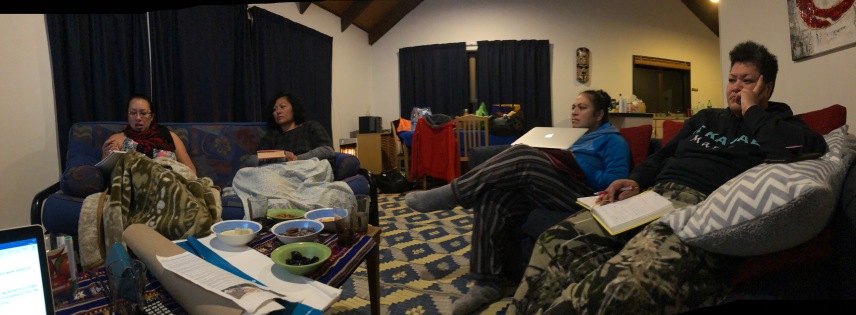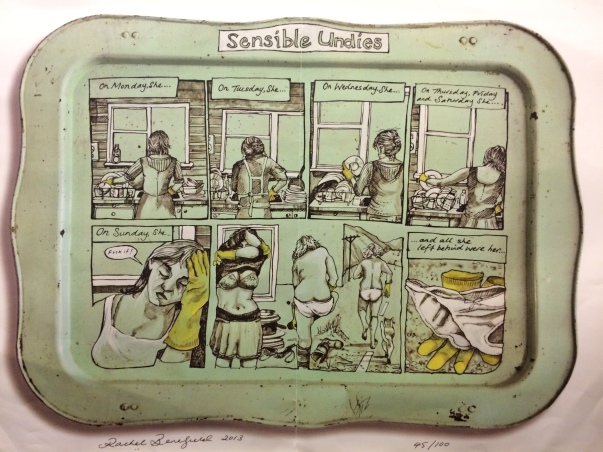My beloved land forever beckons
Go Fiji Go
Until my last breath
~ English translation, lyrics from Vanua Domoni
In Fijian, kaitani refers to one who is from outside or from another community, province or country.
I’ve been a visitor in Christchurch for three months, dreaming about home. I came with the intention of writing a manifesto about curatorial practice but hadn’t realised how much the distance and isolation from my community and my community of practice would affect me.
I came to understand how much the people of my practice come first.
Being based at the University of Canterbury, I took the opportunity to participate in the Fijian Students Association. We worked together to produce a celebration for Fiji Independence Day on October 10th, a programme of talks and an exhibition in the Pasifika Lali Room within the School for Māori & Indigenous Studies. Our Fiji Day event included reflections on Fiji history and language, an item by local Fijian youth who performed a meke (traditional Fijian dance), chicken curry, a Fiji Day cake and the singing of Vanua Domoni by some of the active members of the Fijian Students Association.
At our Fiji Day event, the lyrics of Vanua Domoni from FijianLyrics.com were displayed on a projector screen for the students, and the audience, made up of fellow students, staff and members of the local Fijian community, to sing along. The lyrics of Vanua Domoni speak of a love and longing for Fiji, the beloved land. As an unofficial anthem of our Fijian rugby teams, the song evokes the pride and identity of Fijians both at home and away. The unifying act of singing together is collectively uplifting, a sharing of common purpose, a form of devotion.
I’m interested in space that is created when Pacific ideas, voices, culture and language are central. I’ve built my curatorial practice around the interventions that can be manifested in New Zealand art galleries and museums to challenge Eurocentric cultural norms for ways of seeing, interpreting and valuing visual language. In the current climate within the arts and cultural sector, diversity measures are increasingly part of the arts funding paradigm but thinly veiled programming efforts towards social inclusion still too often reinscribe power inequalities. The act of enabling Pacific artists and audiences, and other minority communities, to participate and contribute to publicly funded spaces and events, is an act of sharing power and decolonising the time and space around our arts, cultures and people.
Kulimoe’anga ‘Stone’ Maka and I spent time during my residency discussing the influence of the Pacific on Western fine art since Tonga’s first encounter with Europeans in the 17th century. We shared origin stories and unpacked the clues of re-imagined historical narratives and their Biblical parallels. In sharing my anxieties of working in such Pākehā dominated spaces and places, our discussions on danger and beauty, metaphor and symbolism in Tongan and Fijian arts and culture, helped ground my thinking.
In his signature style, Maka’s large-scale smoke painting entitled, Mafoa e ata (Dawn), reflects everything we had shared. It is imbued with the memories of his Tongan childhood, of watching his mother mastering the method of smoking barkcloth to achieve deep, dark colour plains. It is all the tensions and synchronicity of his relationship with Western abstract art. And it is the messy space between the polarised worlds of darkness and light, white and black, us and them.
My theory of curating is grounded in the transformative act of reflecting the world I share with Pacific people, creating safe spaces for real talk about the complexities and deviancies of contemporary life. Curating is, in essence, building protections and modes of transmission around our narratives. Kaitani has been a restorative process of re-valuing the principles that guide me, the artistic enquiry that excites me and fresh air for encountering new ways of seeing.
Kaitani runs from 25 November – 24 December 2017 at The Physics Room, 209 Tuam Street, Christchurch, New Zealand.
Ema Tavola has lived and worked within the creative sector in South Auckland, New Zealand since 2002. Her research is practice-based and concerned with curating as a mechanism for social inclusion, centralising Pacific ways of seeing, and exhibition making as a mode of decolonisation. She was the founding curator of Fresh Gallery Ōtara, where she produced satellite projects for ARTSPACE and Te Tuhi Centre for the Arts, in addition to advising on exhibitions for Auckland Art Gallery and Auckland Museum. She was the first curator awarded the CNZ Arts Pasifika Award for Contemporary Art (2012) and recipient of the 2017 Macmillan Brown Centre for Pacific Studies Residency at the University of Canterbury.
Kulimoe’anga ‘Stone’ Maka was born in Patangata, Tonga and migrated to New Zealand in 1997 aged 26. During his studies at Manukau School of Visual Arts, he began exploring traditional Tongan mark making techniques using smoke as a medium. His ambitious and experimental painting practice has evolved into a unique form of Tongan abstraction earning him numerous accolades and acquisitions in both public and private collections. Whilst balancing the demands of parenting a young family, Maka has been working from his East Christchurch-based studio for the past decade.
The University of Canterbury (UC) Fijian Students Association was officially affiliated in 2017. There are just over 80 students of Fijian heritage currently studying at the University. The students featured in Kaitani are Akili Namuaira, Peni Apisai, Curtis Fatiaki, Josefa Tabua, Sai Saukuru, Filimoni Waqainabete, Isei Vuluma, Epeli Bogitini and Filipe Batiwale.
Acknowledgements
Special thanks to Professor Steven Ratuva, for opportunities to flex my thinking and understand wider contexts for my work. Vinaka vakalevu to Lydia Baxendell for support, tips and understanding of balancing curator life with toddler mum life. Thank you to the University of Canterbury staff who helped me feel welcome. Ofa lahi atu to the Wong famili, the Aniseko famili, and the grounding energies of Lanuola Mereia Aniseko. A big thank you to Jamie, Fiona and Hope, and the spirits of The Physics Room – it has been a privilege.
Works List
Mafoa e ata (Dawn) (2017)
Smoke on canvas
Kulimoe’anga ‘Stone’ Maka
Vanua Domoni, Fiji Day 2017, Canterbury (2017)
University of Canterbury Fijian Students Association
Video by Ema Tavola
PIMPImanifesto (2017)
Written by Ema Tavola with support from Tanu Gago, Leilani Kake and Kolokesa Māhina-Tuai. Graphic design by Nicole Lim.
















